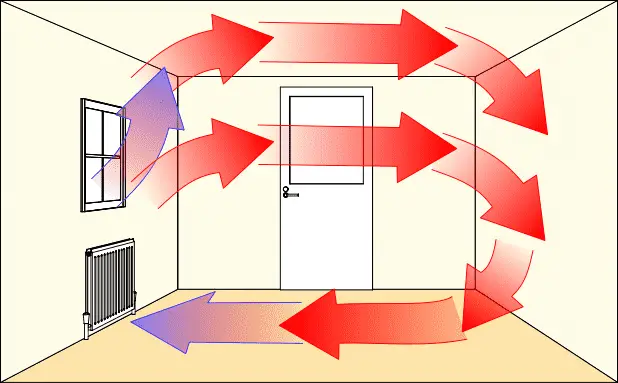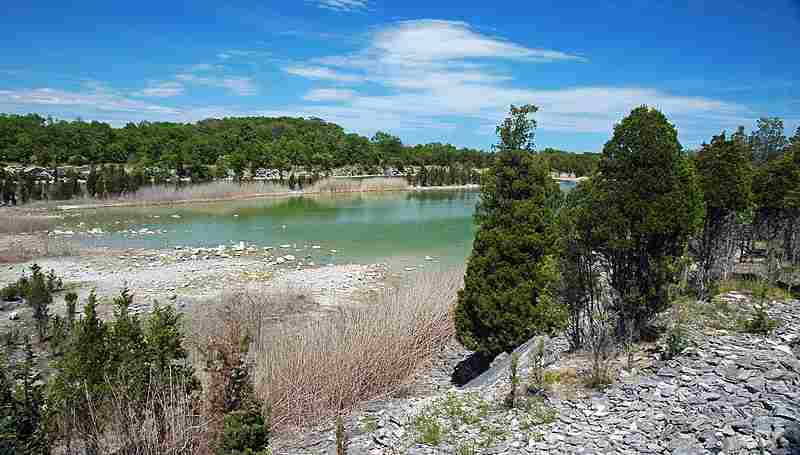Convective Heat Transfer Definition and Types Explained
Convective heat transfer is the transfer of thermal energy from one point to another in a fluid medium by the cyclic motion of fluid masses. This article discusses convective heat transfer definition and types, as outlined below;
-Convective Heat Transfer Definition: 5 Ways to Define Convective Heat Transfer
-Types of Convective Heat Transfer
Convective Heat Transfer Definition: 5 Ways to Define Convective Heat Transfer
Convective heat transfer is simply a process of energy transfer which occurs in fluid-dominated systems through the kinematics or motion of fluid masses under the influence of thermal energy and density differences [2].
The above is a most basic definition of convective heat transfer, which highlights its most basic attributes including the dominance of fluids in convective systems.
Below is an alternative convective heat transfer definition, that sheds more light on the concept, in terms of the mechanism(s) involved;
Convective heat transfer is a thermodynamic mechanism whereby heat is continuously cycled in an environmental system by the alternate rise and fall of warm, less-dense, and cool, dense fluid masses respectively [4].
Drawing from the above definition, convective heat transfer can be viewed as a partial heat-recycling process of sorts; because when heat is continuously transferred and cycled between warmer and colder fluid masses, the overall rate of energy loss from the system is often reduced.
Next, the convective heat transfer definition is outlined in such a manner that highlights the types of convective heat transfer (or types of convection) as a central theme;
Convective heat transfer is the cyclic transfer of heat energy from one zone of a fluid system to another, which could be any of three types including natural, assisted, and forced heat transfer.
Basically, there are two main types of convective heat transfer which are; natural and forced, while the assisted category falls in-between, as an intermediate, secondary type of convection.
More clarity regarding the types of convective heat transfer can be provided by highlighting some examples of convective heat transfer. Below is yet another convective heat transfer definition, that makes mention of these examples;
Convective heat transfer is one of the modes of thermal energy transmission that occurs in both natural and artificial systems by the motion of fluids; as can be observed in; open OTEC pumped systems, domestic water heating, geothermal reservoirs, mammalian blood circulation, wind energy propagation, ice melting and electric fan operations.
The examples listed above are classic representations of how convective heat transfer works in real life; and they indicate some of the core characteristics of the process such as its fluid-dominated, dynamic mechanism. They also show that convective heat transfer is a versatile concept, and can occur within a variety of systems, and under diverse conditions.
Lastly, the convective heat transfer definition, is outlined in a manner that presents convective processes as one of the core modes of thermal energy transfer;
Convective heat transfer is a process whereby fluids transfer heat energy from one point to another, so that the volumetric effect of heat transfer causes these fluids to rise and fall in alternate, cyclic succession, as different from conduction and radiation that involve contact-transmission and vacuum transmission respectively.

Types of Convective Heat Transfer
Types of convective heat transfer are; natural, assisted, and forced transfers respectively. Each of them is briefly discussed below;
1). Natural Convective Heat Transfer (as one of the Types of Convective Heat Transfer)
Natural convective heat transfer; also called natural or free convection, is a type of convection in which heat circulation and fluid motion both occur without the influence of any external, artificial energy.
It is called 'natural convection' because it occurs solely under natural conditions, and by the action of natural elements like gravity, and temperature.
The notion of fluids in a natural convection system depends on their buoyancy, which is determined by their density, that is in turn a function of their temperatures, or heat content.
A real-life example of convective heat transfer is ocean thermal energy circulation; which involves the alternate rising and sinking of cold and warm water masses in the ocean respectively [3].
It becomes assisted when pumps and vacuum chambers are introduced to improve the efficiency of heat and fluid circulation, as is the case for some Ocean Thermal Energy Conversion (OTEC) systems.
Natural convective heat transfer often proceeds under energy provided by solar sources (i.e. the Sun). Another good example of this type of convective heat transfer is land and sea breeze.

2). Assisted Convective Heat Transfer
Assisted convective heat transfer is simply an active process of natural convection that is enhanced by the introduction of external energy and force.
As earlier mentioned, an example is a pumped-ocean thermal energy system that uses artificial mechanical pressure to improve the rate of heat and fluid circulation. These systems may also use low-pressure vacuum chambers to reduce the boiling point of seawater and induce the production of steam that is used to spin a turbine for electricity generation [5].
Such modifications assist the natural forces like solar energy and gravity, which are responsible for convection.
3). Forced Convective Heat Transfer (as one of the Types of Convective Heat Transfer)
Forced convective heat transfer is the direct opposite of free convective heat transfer, and it is driven mostly by artificial energy and forces that are introduced into the convection system from external sources [1].
The difference between free convection and forced convection is in the origin of dominant forces involved; where free convection is dominated by forces from natural sources, and forced convection is dominated by forces from artificial sources.
An example of forced convective heat transfer is the cycling of heat in a room by an electric fan, which supplies artificial air pressure to force warm gases downward and induce continuous fluid cycling to cool the temperature of the room.
Forced convection is also achieved using a radiator that induces heat dynamics which lead to convective fluid cycling in an environmental system.
It must be noted that all types of convective heat transfer also depend on conduction to transfer heat energy across the molecular structure of fluid masses [6].

Conclusion
Convective heat transfer is a natural, assisted or forced process whereby heat is circulated in a fluid-dominated medium or system by the cyclic motion of the fluid.
Types of convective heat transfer are;
1. Natural Convective Heat Transfer
2. Assisted Convective Heat Transfer
3. Forced Convective Heat Transfer
References
1). Ajmera, S. K.; Mathur, A. N. (2015). "Combined Free and Forced Convection in an Enclosure with different Ventilation Arrangements." Procedia Engineering, Volume 127, 2015, Pages 1173-1180. (Accessed 1 April 2023).
2). Baluguri, S. B.; Srinivas, G. (2020). "Convective Heat and Mass Transfer of Two Fluids in a Vertical Channel." Finite Element Methods and Their Applications. Available at: https://doi.org/10.5772/intechopen.94529. (Accessed 1 April 2023).
3). Faizal, M.; Ahmed, M. R. (2011). "On the ocean heat budget and ocean thermal energy conversion." International Journal of Energy Research 35(13):1119 - 1144. Available at: https://doi.org/10.1002/er.1885. (Accessed 1 April 2023).
4). Thompson, S. E.; Daniels, K. E. (2010). "A porous convection model for grass patterns." Am Nat. 2010 Jan;175(1):E10-5. Available at: https://doi.org/10.1086/648603. (Accessed 1 April 2023).
5). Vega, L. (2002). "Ocean Thermal Energy Conversion Primer." Marine Technology Society Journal 36(4):25-35. Available at: https://doi.org/10.4031/002533202787908626. (Accessed 1 April 2022).
6). Zohuri, R. (2017). "Forced Convection Heat Transfer." Thermal-Hydraulic Analysis of Nuclear Reactors (pp.323-345). Available at: https://doi.org/10.1007/978-3-319-53829-7_9. (Accessed 1 April 2023).













